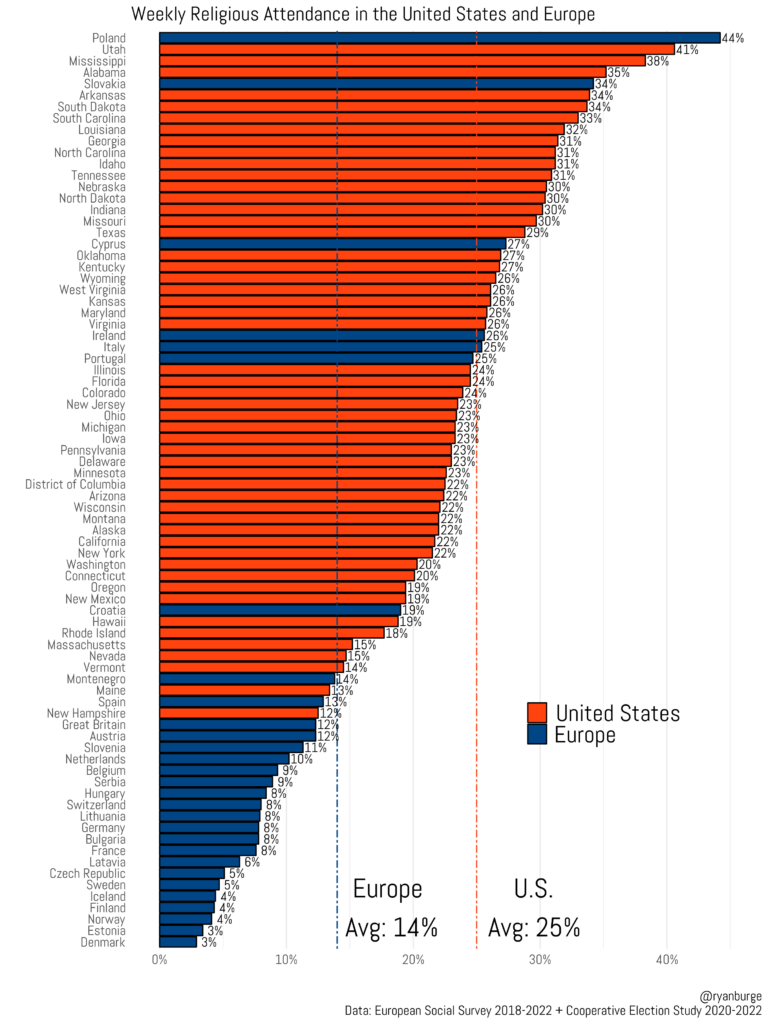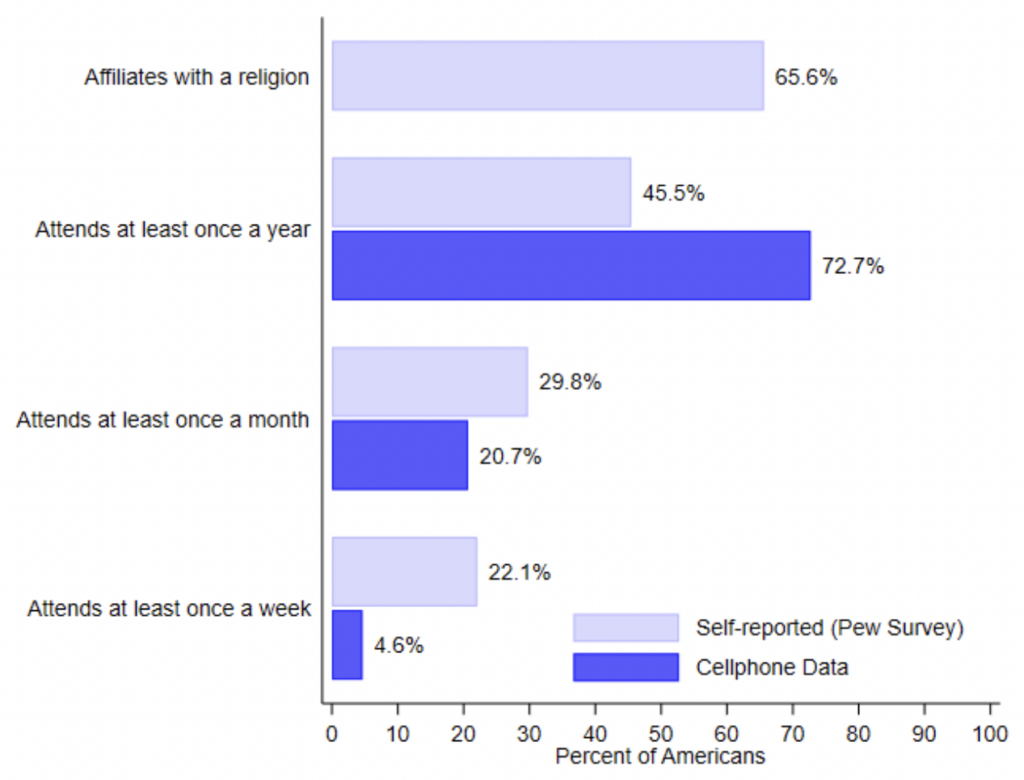The US is generally thought to be far more religious than Europe – especially Western Europe. Americans are much more likely to be “certain” that God exists, to pray every day, to say religion is “very important” in their lives, and to attend religious services on a regular basis. Here’s a chart made by the sociologist Ryan Burge, which compares weekly religious attendance in US states and European countries:

With a few notable exceptions (such as famously Catholic Poland), there is almost no overlap. US states have much higher rates of religious attendance than European countries. In fact, the least religious US state, New Hampshire, has a higher rate of religious attendance than no less than 20 European countries – including Britain, France and Germany.
But has religious attendance in the US been overestimated? A new paper suggests it might.
Economist Devin Pope obtained a large dataset comprising the locations of millions of smartphone users at various times of day. These locations were inferred based on ‘pings’ made by the smartphones at particular latitude-longitude coordinates. For example, if a user’s smartphone pinged at the coordinates of a church, it was inferred that the user was attending a religious service.
Encouragingly, the dataset looked to be reasonably representative. For example, the distribution of smartphone users across US states was similar to the actual distribution of people across states. Users in the dataset were slightly wealthier than the average American – which isn’t surprising since they were selected for owing a smartphone (though these days, the vast majority of Americans can afford one).
Using the smartphone data, Pope was able to estimate the percentage of Americans who attend religious services yearly, monthly and weekly. What did he find? The chart below compares his results with those from Pew Research surveys.

As you can see, Pope’s results suggest that yearly attendance has been underestimated but that weekly attendance has been substantially overestimated. According to Pew Research surveys, 22% of Americans attendance a religious service each week. But according to smartphone data, the figure is closer to 5%. (Pope defined ‘weekly’ attendance as going at least three times per month).
Incidentally, one reason why the smartphone data gives a higher figure for yearly attendance is that Pew Research asks about religious attendance “aside from weddings and funerals”, whereas the smartphone data makes no such distinction.
One reason surveys might overestimate religious attendance is social desirability bias. Saying you go to church regularly makes you sound like a good person, especially in a God-fearing country like the US. So some Americans might tell pollsters they go to church regularly when they actually go irregularly, or not at all.
However, it’s also possible that the smartphone data are biased and weekly attendance hasn’t been overestimated. Indeed, the sociologist Lyman Stone is not convinced by Pope’s analysis.
He gives a number of reasons why the smartphone data would yield ‘too low’ estimates of weekly attendance: some people don’t take their phones to church; some of those who do turn them off or put them on airplane mode; and older churches have poor signal quality because they’re often made of stone. (According to a survey Pope himself carried out, less than 80% of Americans “always” take their phones to church.)
For my own part, Stone’s scepticism seems justified. On the other hand, if Pope is proven correct, the US will fall down the rankings of weekly attendance to become just an ordinary European country – and a lot of our assumptions will have to be revised.












To join in with the discussion please make a donation to The Daily Sceptic.
Profanity and abuse will be removed and may lead to a permanent ban.